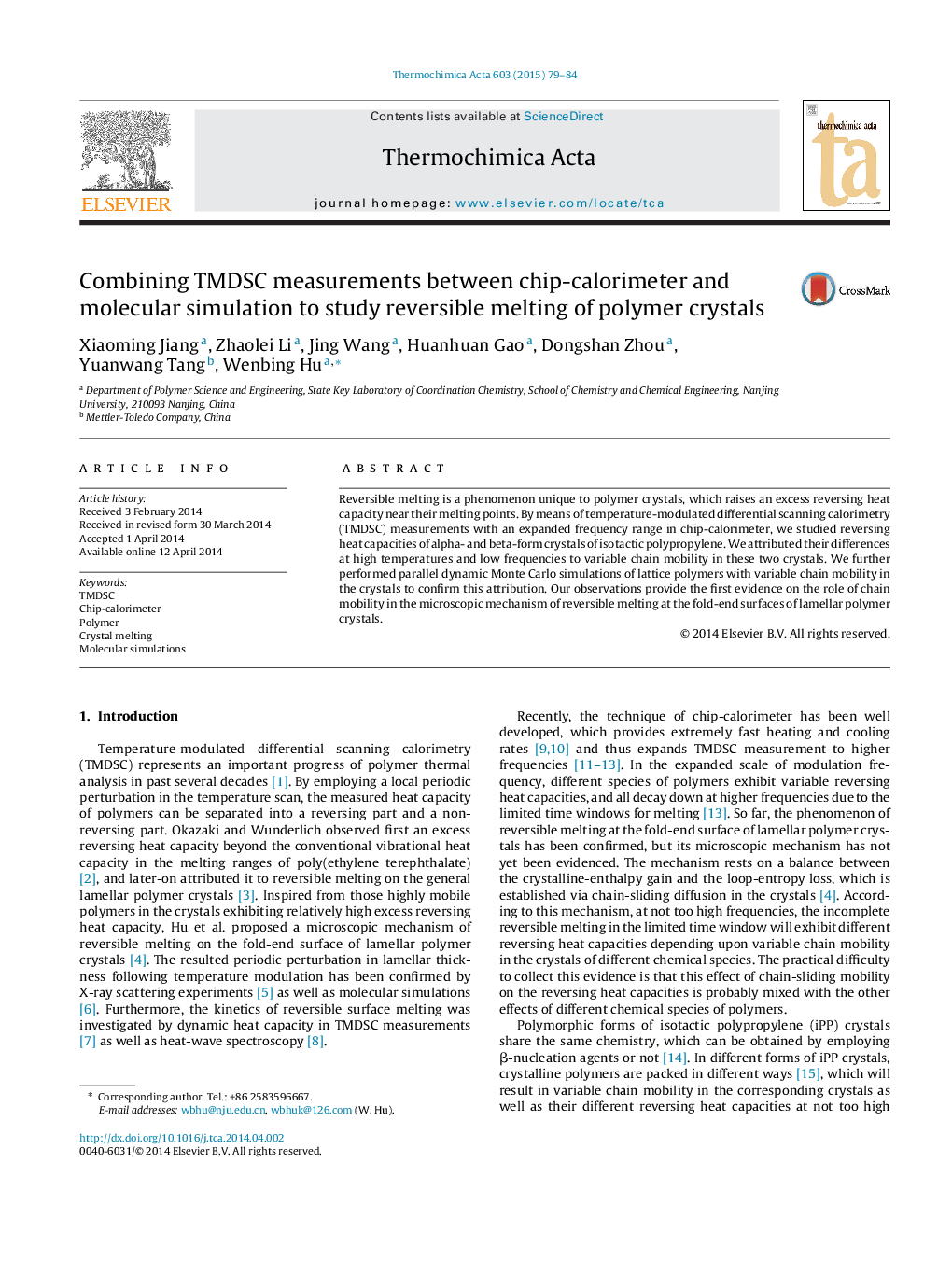| Article ID | Journal | Published Year | Pages | File Type |
|---|---|---|---|---|
| 672939 | Thermochimica Acta | 2015 | 6 Pages |
•First combination of chip-calorimeter and molecular simulation in TMDSC measurements.•Expanded frequency window of TMDSC in both chip-calorimeter and molecular simulation.•First evidence on the role of chain mobility in reversible surface melting of polymer crystals.•Molecular-level approach to understand various experimental kinetics under chip-calorimeter.
Reversible melting is a phenomenon unique to polymer crystals, which raises an excess reversing heat capacity near their melting points. By means of temperature-modulated differential scanning calorimetry (TMDSC) measurements with an expanded frequency range in chip-calorimeter, we studied reversing heat capacities of alpha- and beta-form crystals of isotactic polypropylene. We attributed their differences at high temperatures and low frequencies to variable chain mobility in these two crystals. We further performed parallel dynamic Monte Carlo simulations of lattice polymers with variable chain mobility in the crystals to confirm this attribution. Our observations provide the first evidence on the role of chain mobility in the microscopic mechanism of reversible melting at the fold-end surfaces of lamellar polymer crystals.
Graphical abstractFigure optionsDownload full-size imageDownload as PowerPoint slide
